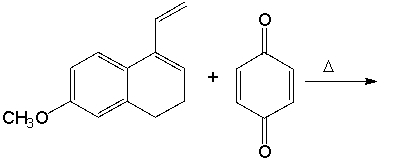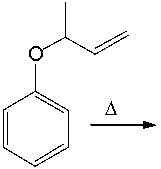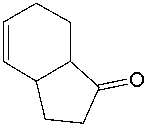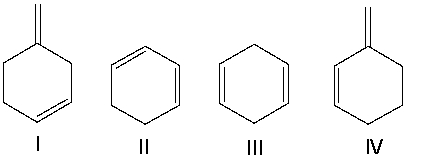A) I and V
B) II and IV
C) III and IV
D) I, III and VI
E) II, IV and V
Correct Answer

verified
Correct Answer
verified
Essay
The following Diels-Alder reaction product is an intermediate in the synthesis of estrone. Provide the structure of the product. 
Correct Answer

verified
Correct Answer
verified
Multiple Choice
Which of the following diene(s) cannot undergo the Diels-Alder reaction? 
A) I
B) II
C) III
D) IV
E) I & IV
Correct Answer

verified
Correct Answer
verified
Multiple Choice
Dienes with adjacent π bonds are classified as ______.
A) isolated
B) cumulated
C) skipped
D) conjugated
E) none of these
Correct Answer

verified
Correct Answer
verified
Essay
Provide the structure for (Z)-2-methyl-2,4-hexadiene.
Correct Answer

verified
Correct Answer
verified
Multiple Choice
Which one of the following represents the highest energy -antibonding molecular orbital of 1,3-butadiene? 
A) I
B) II
C) III
D) IV
Correct Answer

verified
Correct Answer
verified
Essay
Provide the reagents necessary to carry out the following conversion. 
Correct Answer

verified
1. H2SO4, he...View Answer
Show Answer
Correct Answer
verified
View Answer
Multiple Choice
How many electrons does the HOMO of 1,3-pentadiene have in its excited state?
A) 1
B) 2
C) 3
D) 4
E) none
Correct Answer

verified
Correct Answer
verified
Multiple Choice
Identify the product of a thermodynamically-controlled reaction.
A) the most stable product
B) the product whose formation requires the smallest free energy of activation
C) the product that can be formed in the fewest steps
D) the product that is formed at the fastest rate
E) none of these
Correct Answer

verified
Correct Answer
verified
Multiple Choice
Identify the MOs that react to form cyclohexene.
A) HOMO of 1,3-butadiene and LUMO of ethylene
B) LUMO of 1,3-butadiene and LUMO of ethylene
C) HOMO of 1,3-butadiene and HOMO of ethylene
D) LUMO of 1,3-butadiene and LUMO of 1,3-butadiene
E) HOMO of 1,3-butadiene and HOMO of 1,3-butadiene
Correct Answer

verified
Correct Answer
verified
Multiple Choice
Predict the product for the following Claisen rearrangement. 


A) I
B) II
C) III
D) IV
E) V
Correct Answer

verified
Correct Answer
verified
Essay
Provide the structures of A, B and C for the following reaction sequence. 
Correct Answer

verified
Correct Answer
verified
Multiple Choice
Rank the following dienes in order of increasing stability (least to most) . 
A) I < IV < III < II
B) III < II < I < IV
C) IV < II < III < I
D) II < IV < III < I
E) IV < III < II < I
Correct Answer

verified
Correct Answer
verified
Essay
Predict the product for the following reaction and provide the curved arrow mechanism for the formation of the product. 
Correct Answer

verified
 _TB4454_00...
_TB4454_00...View Answer
Show Answer
Correct Answer
verified
View Answer
Essay
The following product is formed by an intramolecular Diels-Alder reaction. Provide the structure of the starting compound. 
Correct Answer

verified
Correct Answer
verified
Short Answer
Rank the following dienes in order of decreasing heat of hydrogenation (highest to lowest). 
Correct Answer

verified
IV > V > I...View Answer
Show Answer
Correct Answer
verified
View Answer
Multiple Choice
Which is the most energetically favorable UV transition for 1,3-butadiene?
A) (n *)
B) (n *)
C) ( 2 3*)
D) ( *)
E) ( 1 4*)
Correct Answer

verified
Correct Answer
verified
Multiple Choice
What is the IUPAC name for the following compound? 
A) 1-chloro-1-methyl-2,5-cyclohexadiene
B) 3-chloro-3-methyl-1,4-cyclohexadiene
C) 6-chloro-6-methyl-1,4-cyclohexadiene
D) 2-chloro-2-methyl-1,3-cyclohexadiene
E) None of these
Correct Answer

verified
Correct Answer
verified
Multiple Choice
Identify the conjugated diene(s) . 
A) I
B) II
C) III
D) IV
E) II & IV
Correct Answer

verified
Correct Answer
verified
Multiple Choice
Which one of the following dienes will have the lowest heat of hydrogenation? 
A) I
B) II
C) III
D) IV
E) V
Correct Answer

verified
Correct Answer
verified
Showing 61 - 80 of 140
Related Exams